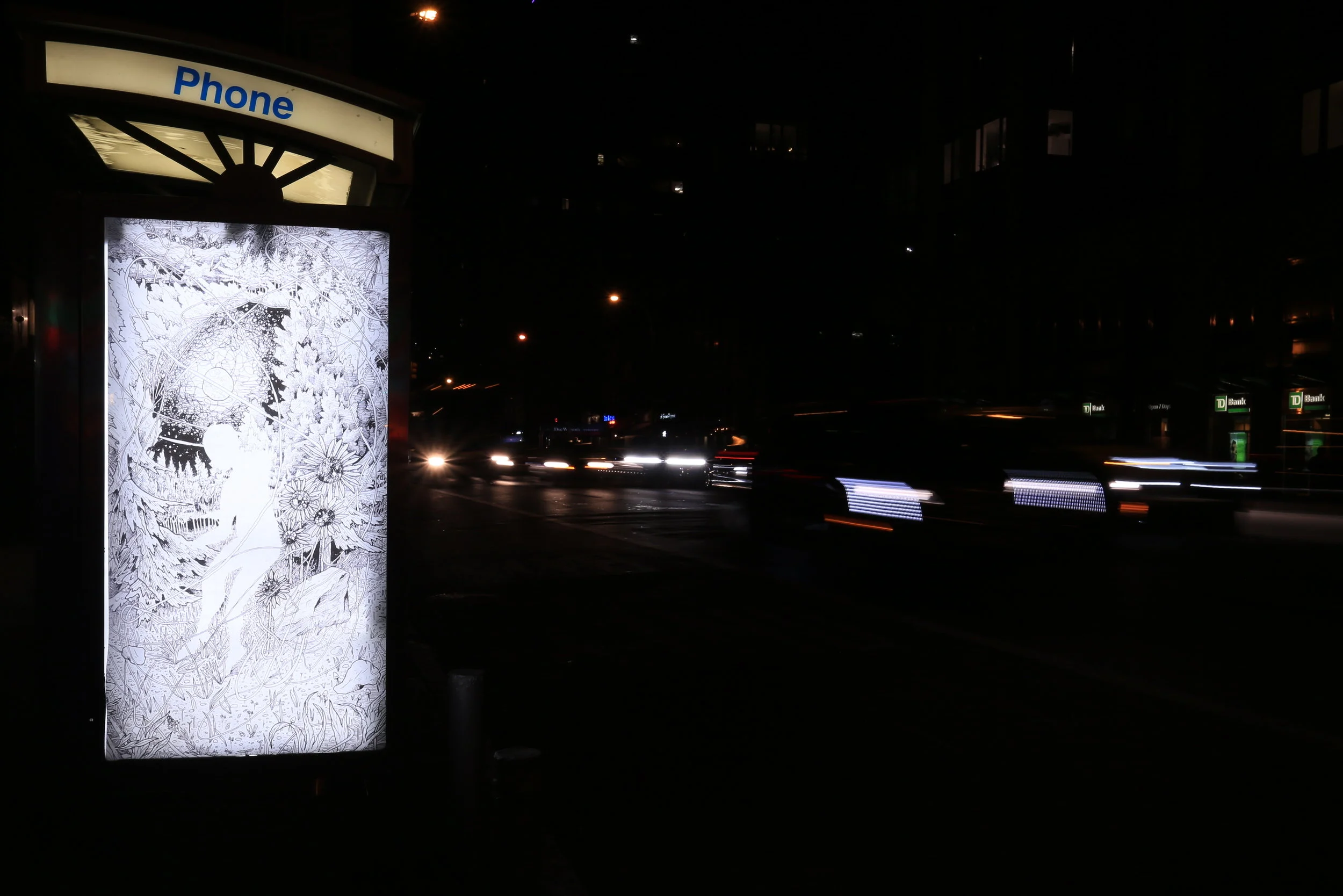Art by Paola Delfín, based on an image by Belal Khaled (Gaza - November 12, 2023). Photo by Luna Park.
For three months, the citizens of Gaza have been under constant siege and assault by the Israeli government. The Israeli military (with the steadfast support of the United States) has targeted schools, hospitals, and houses of worship. Of the 20,000+ Palestinians who have been killed, it is estimated that more than half are women and children. Add to that the forced displacement of most of Gaza’s residents, thousands of houses destroyed, and food and water supplies cut off, and it feels impossible to measure the physical and mental harm being inflicted on Gazan civilians right now.
For those of us living far from the bombings and blockades, it might feel easier to tune it all out or to focus on a single defining moment, like Hamas’ October 7th attack on Israel. Major American media outlets seem to favor that approach. But as Jordan Seiler told us back in 2021, “We deserve a public environment that nurtures our minds and challenges our hearts.” That’s where artists can come in.
Art by Escif, based on an image by Mahmoud Bassam (Gaza - October 21, 2023). Photo by Luna Park.
Unmute Gaza is a campaign that brings photographers in Gaza together with artists and activists to humanize the people of Gaza, share the crisis unfolding there, and declare a refusal to remain silent on this issue. Dozens of artists and photographers have collaborated on posters. Unmute Gaza makes the posters available for free download on their website, and the images have been appearing on streets worldwide.
Art by Daniel Muñoz, based on an image by Sameh Rahmi (Gaza - October 26, 2023). Photo by Luna Park.
We decided to wrap up the Art in Ad Places campaign in 2021, when New York City’s payphones became too scarce to keep installing ad takeovers in them. Unmute Gaza has inspired us to pull out our high-vis vests for the first time in nearly three years. With no payphones left in New York City, we headed to Philadelphia, which still has plenty of analog advertising infrastructure. Let’s not say that Art in Ad Places is back, but we are honored to be returning from semi-retirement to install a selection of Unmute Gaza’s posters.
Thanks to Saki Waki for installation assistance. Photo by Luna Park.
These five posters began as real scenes from Gaza captured by photojournalists on the ground, which have been interpreted by artists working outside of Gaza. The photographers are Belal Khaled, Sameh Rahmi, and Mahmoud Bassam, and the artists are Paola Delfín, Faith47, Daniel Muñoz, Escif, and Incendiaria Libertad. For the most part, these posters capture the human moments of everyday Gazans trying to survive the consequences of the Israeli occupation and military campaign.
Art by Faith47, based on an image by Mahmoud Bassam (Gaza - October 17, 2023). Photo by Luna Park.
Unmute Gaza pushes back against decades of media bias that dehumanizes Palestinian people in the eyes of Western audiences. Despite how we have been conditioned, we hope you don’t turn away from these images.
Art by Incendiaria Libertad, based on an image by Belal Khaled (Gaza - October 19, 2023). Photo by Luna Park.













